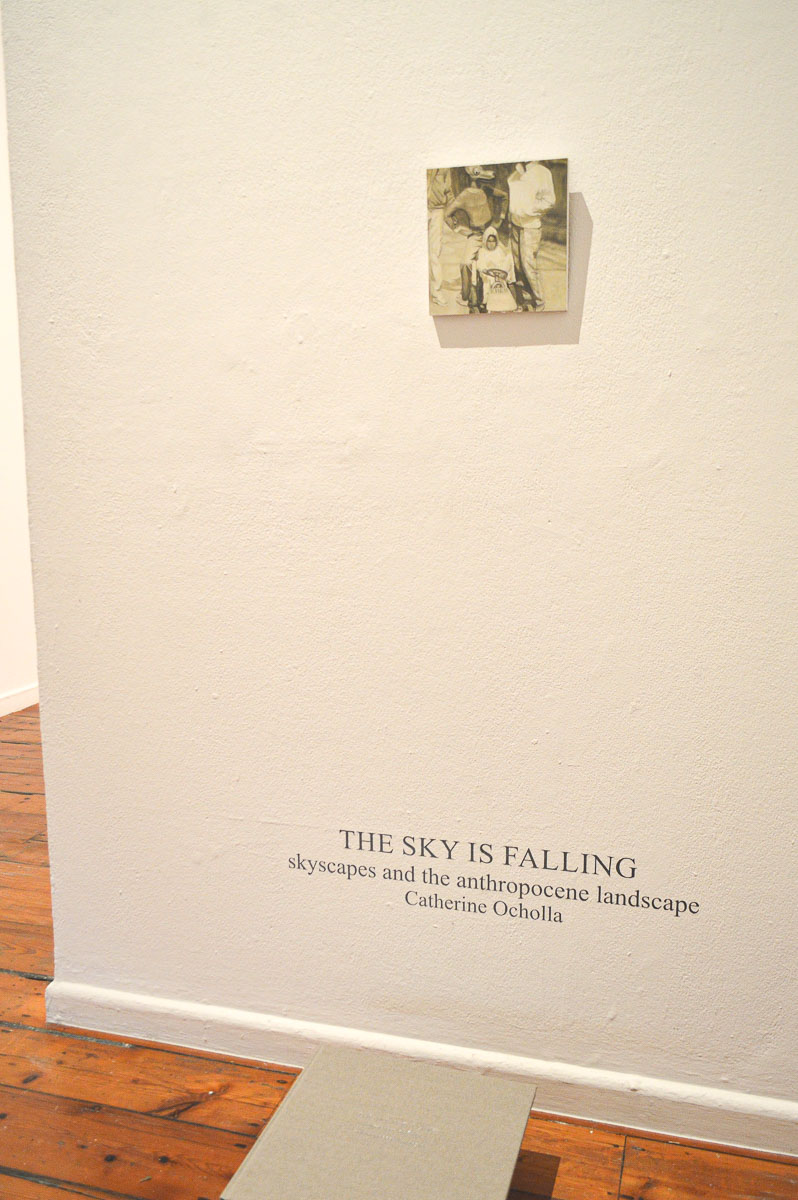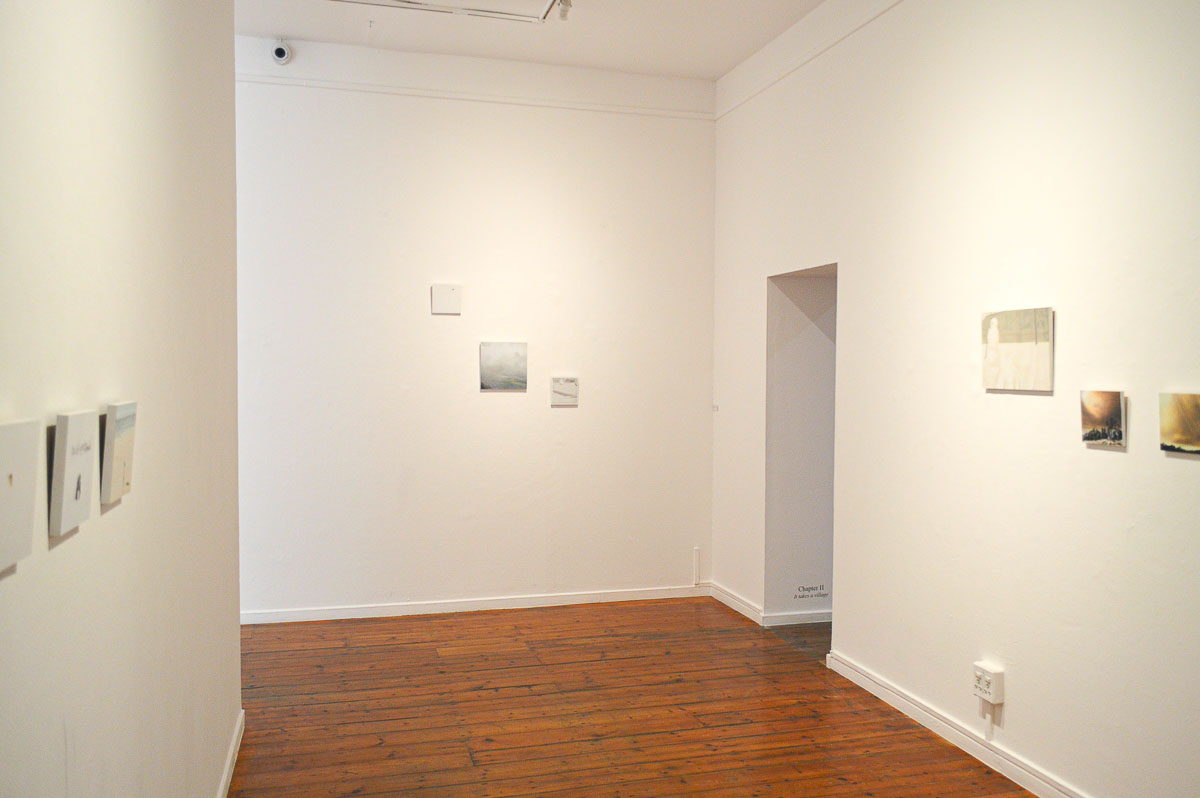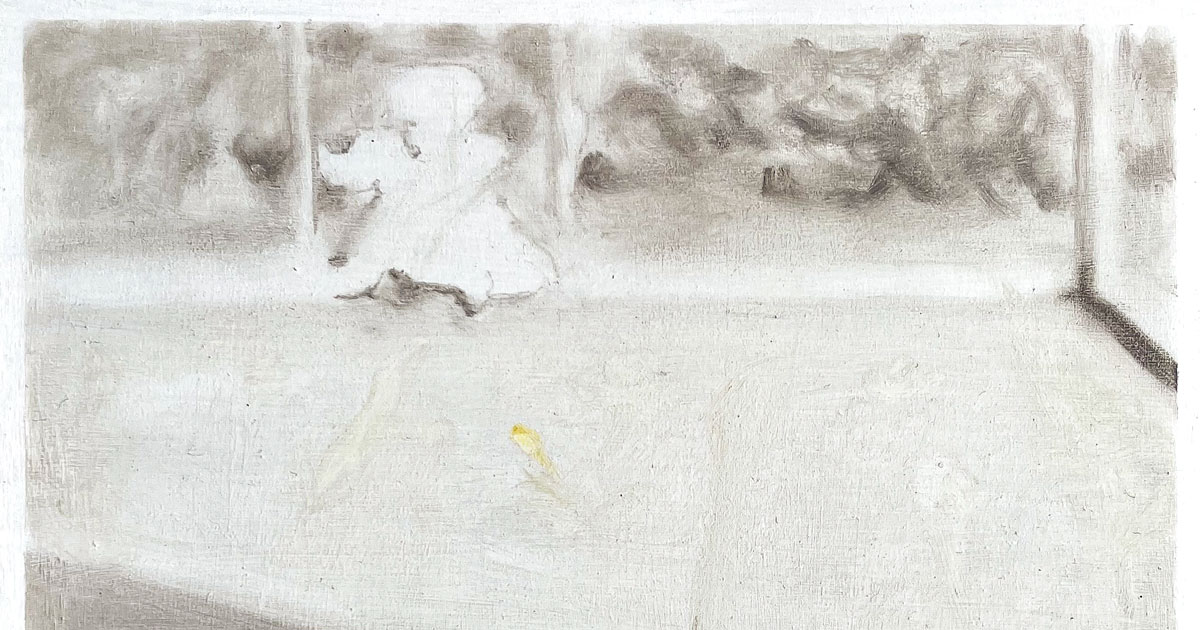Catherine Ocholla has recently submitted a body of paintings titled 'The sky is falling' as part of the requirements for her Master's degree at Michaelis School of Fine Art at the University of Cape Town. StateoftheART is thrilled to present 'The tooth and fairies' for sale, a collection of 4 artworks that comprised the first chapter.
Read more about Catherine Ocholla's MFA submission below, or browse her available paintings for sale.
About: The sky is falling
'The sky is falling is the title of my MFA submission, exhibited on the 30th and 31st of March, 2022, at Michaelis Gallery, UCT, Cape Town. The project comprises an installation of paintings exploring a narrative theme concerning the atmosphere (air, sky and space) in our future present. Alluding to anthropogenic factors such as contamination, global warming, conflict, and neoliberal claims to the Commons of air and space, the premise of my project is speculative. [World] building on real life experiences that are rendered visually credible by the use of realist and photorealist painting techniques, the world that I create is familiar, partly autobiographic and recognisable, but centred around some unspecified catastrophe. Supporting the idea of a narrative still-in-progress, the painterly conceit of ‘non-finito’ serves to undercut the visual certitudes of illusionism. Here the process of painting is visibly evident, rendering the works, or world they depict, as ‘in the making’.
The sky is falling is divided into three chapters: Chapter I: The tooth and fairies, Chapter II: It takes a village, and Chapter III: Fly. Together the chapters weave a complex tale, from Chernobyl to Climate Change, but also function as stand alone projects.
The works featured here are all the paintings from Chapter I: The tooth and fairies.'
- Catherine Ocholla

Chapter I
The tooth and fairies
Tall tales.
Expectations of gifts under pillows from mythical beings.
Disbelief—mine, theirs—suspended.
I am 3 years old.
26th of April, 1986—Chernobyl’s nuclear reactor explodes.
The holiday is over. Irradiated air confines us to a single room for months.
Children are not allowed outside.
Outside looks the same. Geiger counters click that the world is changed.
Sound reminders of the unseen threat.
Tomorrow. It is 2020.
But for the face masks, city, land and sky are the same.
There is a virus, hanging in the air.
Kyiv all over again.
‘Nu, pohody!'* , translated from Russian to mean ‘Just you wait!’.
The grown-ups have lost their heads. There is a child in a Go-cart marked
‘KIEV’. A big, bad wolf for the journey through the forest.
I have a wisdom tooth pulled out. A grown up picks something up in the snow.
A child by the sea, looking far, across space-time itself.
‘Specimen’, or is it space-men.
That poem by Robert Frost. ‘Melt’?
A snowman is the wilting companion of two smoke-filled skies.
There are a lot of fires.
And with time, a lot of flies, casting long shadows.
‘Stasis’.
Time stops. I am there. I am here.
About: The Tooth and Fairies
{extracts from my MFA submission}
I montage personal archives in the ‘landscaping’¹ of my speculative world. The little girl in Nu Pogodi! is the driver of this story. The tooth [in Specimen] may or may not be her own. This child cannot be approached as either good or bad; she could be the person that built the snowman and/or caused the fires in Melt; Nu pogodi! can be endearing or a threat, to the child in the painting, or of the child as an adult. Childhood and adulthood are entwined in the titles that (with the exception of Nu Pogodi!) are borrowed from science as opposed to magic.
The adults in ‘The tooth and fairies’, and across the body of work, are all visually obscured, rendered anonymous. The man with his hand in the snow in Specimen was based on an image of my father, who moved to the Soviet Union from Kenya to get his tertiary education, where he also met my mother. The wisdom of tooth, of age, of learning, runs through Specimen. Questions are raised about identity and association - whether the snowy landscape is in Europe, or in Africa². Whether these people [of colour] in Kyiv are in the past, or the present. The West and Europe are synonymous with snow. The man and the child are anomalous in the context of Kyiv and the snow. The disassociation between people of colour and representation and engagement in speculative futures is encapsulated in this first encounter and perceptions about ‘them' in this ‘alien’ environment.
…My family lived in Kyiv between August 1984 and January 1988. In 1986, we had just returned to the city from a vacation in Krasnodar³ [unbeknownst to us] right after the Chernobyl disaster. The word ‘Kiev’ in Nu pogodi! therefore activates a place in the mind, both as an autobiographic engagement with Chernobyl, and reflective of the threat of escalation to Nuclear war posed by the [‘current’] conflict between the Ukraine and Russia. This is the first of two unrelated events across space-time that feature as reality fragments behind this body of work, the second being the COVID-19 pandemic.
Extrapolating into the future in the context of Chernobyl and COVID-19, the girl may be the story’s driver, but the landscape is its narrator. In “The tooth and fairies” and across the body of work, the landscape is not necessarily passive. The landscapes are ordinary, but loaded with various subtexts, both autobiographic and imagined. The man and the snow serve as symbols of my existence, and therefore of existence itself. The girl on the beach is a play on the Soviet Era war song ‘Katusha’, specifically the line “Vykhodila na bereg Katyusha”, translated to mean “Katusha/ Catherine went out onto the beach”. A child that is also a weapon. There are burning forests in Melt, seaweed from underwater forests in Specimen, and symbolic forests surrounding the wolf and girl in the hood in Nu Pogodi!. Fairies live in forests, that produce air. Allusions to air in ‘The tooth and fairies’ are recurring. The wind blowing through a girl’s hair on the beach, fires that require oxygen to burn, the act of flying through air: a journey of escape to freedom, or freedom to escape.
A single fly in Stasis, the symbol in painting of decay and death, raises questions about ‘why’ it is there. ‘The tooth and fairies’ challenges the viewer to see what is not there, a speculation of artefacts, relics of the past, inter-connected and solitary identities, and relics of the future.
¹ I use this term to denote the shaping of a world through landscapes.
² It snows quite often in parts of South Africa.
³ The birthplace of my mother.
 Installation view of 'Chapter I: The tooth and fairies' by Catherine Ocholla at Michaelis School of Fine Art, University of Cape Town in March 2022.
Installation view of 'Chapter I: The tooth and fairies' by Catherine Ocholla at Michaelis School of Fine Art, University of Cape Town in March 2022.
*Artworks on this exhibition were produced as part of the requirements for a postgraduate degree at the Michaelis School of Fine Art, University of Cape Town.

Detail of 'Stasis' by Catherine Ocholla
See more of Catherine Ocholla's paintings for sale online, or visit the Gallery this winter to see Chapter I: The tooth and fairies on show.

